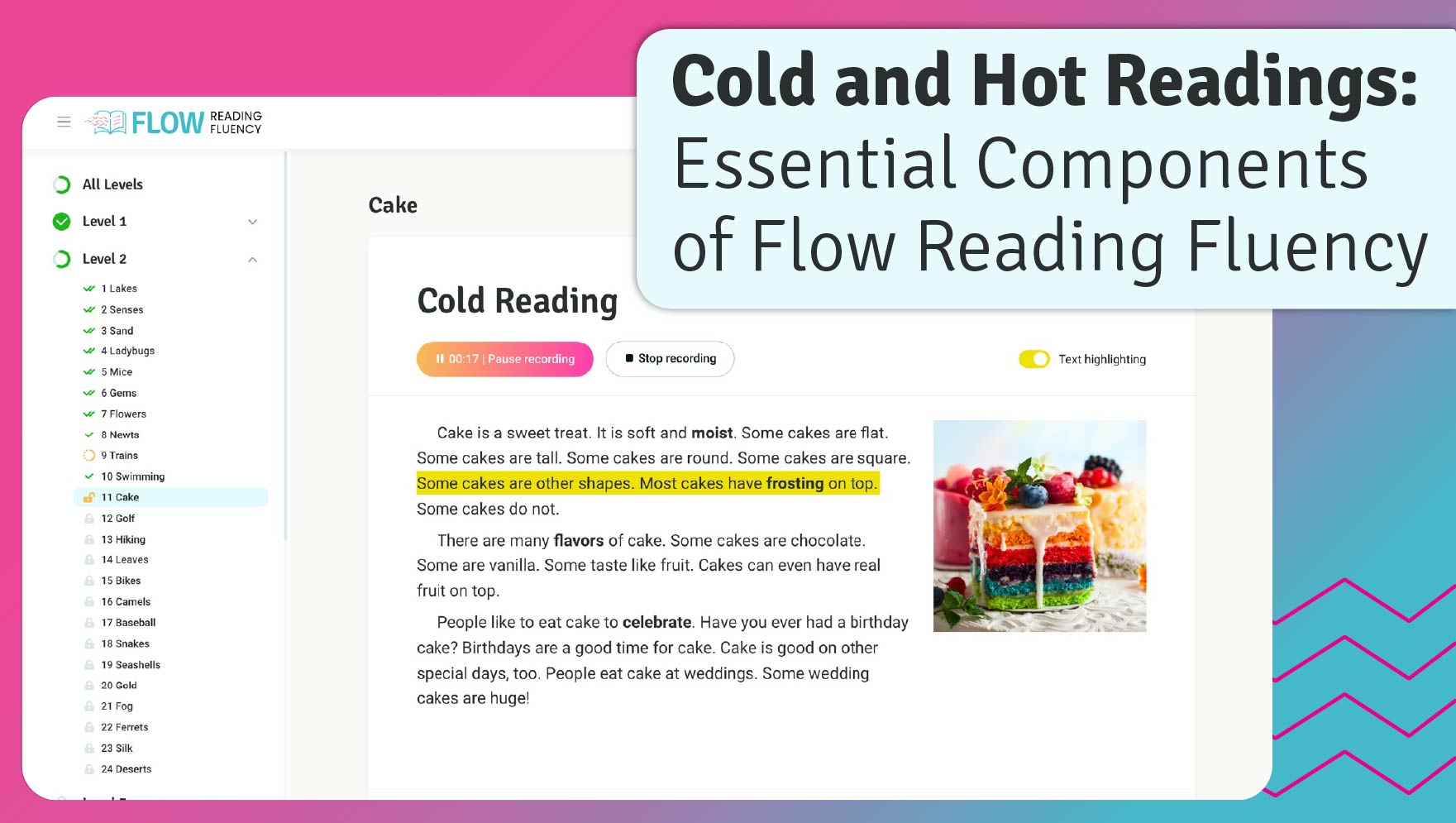
Cold and Hot Readings: Essential Components of Flow Reading Fluency
One of the most effective ways to measure and build reading fluency is through cold and hot readings. This paired approach—built into the Flow Reading Fluency program—captures not only where a student begins but also how much progress they can make with structured practice. By comparing initial and repeated performances, teachers and parents gain valuable insight into student growth across accuracy, rate, and prosody.
What Is a Cold Reading?
A cold reading is a student’s first attempt at reading a passage aloud. It reflects their immediate decoding and fluency skills without preparation. Cold readings help teachers identify:
- Word recognition accuracy: How well a student tackles unfamiliar text.
- Baseline fluency: Words correct per minute (WCPM) before practice.
- Prosody markers: Whether phrasing and expression emerge naturally or are absent.
Cold reads provide a snapshot of where a reader currently stands.
What Is a Hot Reading?
A hot reading is a student’s performance with the same passage after practice and repeated readings. At this stage, the text is familiar, and students can devote more mental energy to expression and comprehension. Hot readings typically show:
- Improved accuracy: Fewer miscues and smoother decoding.
- Increased automaticity: Faster, more effortless word recognition.
- Enhanced prosody: More natural phrasing, rhythm, and expression 1.
Why the Comparison Matters
The difference between a student’s cold and hot reads highlights growth. If a student shows strong improvement between the two, it indicates that repeated reading is effectively boosting automaticity and comprehension. When improvement is limited, teachers gain diagnostic insight into persistent challenges—such as decoding weaknesses, limited vocabulary, or comprehension difficulties.
Research consistently shows that repeated reading, when paired with feedback and progress monitoring, leads to significant gains in both fluency and comprehension 2. Cold and hot readings make this growth visible to both teachers and students.
How Flow Reading Fluency Uses Cold and Hot Reads
Flow Reading Fluency integrates cold and hot readings into every leveled passage. Students begin with a cold read to establish a baseline, then engage in structured practice before completing a hot read. Flow automatically tracks growth and presents results in charts and graphs, making progress transparent for educators, parents, and students.
This structure ensures that instruction is not just about practice, but about measuring growth and celebrating improvement—two essential motivators for struggling readers.
Final Thoughts
Cold and hot readings provide more than data points; they tell the story of student growth. By capturing both where a reader starts and how far they can go with practice, teachers can tailor instruction, identify needs, and build confidence. Flow Reading Fluency makes this process seamless, helping every student move closer to becoming a fluent, expressive, and engaged reader.
References
- Miller, J., & Schwanenflugel, P. J. (2008). A longitudinal study of the development of reading prosody as a dimension of oral reading fluency in early elementary school children. Reading Research Quarterly, 43(4), 336–354. ↩︎
Therrien, W. J. (2004). Fluency and comprehension gains as a result of repeated reading: A meta-analysis. Remedial and Special Education, 25(4), 252–261. ↩︎